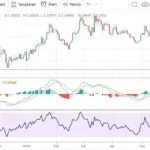In today’s fast-paced, tech-driven world, managing money has become both easier and more challenging. While digital tools make budgeting simpler and more convenient, constant online spending, subscriptions, and cashless payments can make it harder to keep track of where your money goes. Smart budgeting in the digital age isn’t just about saving — it’s about using technology wisely to gain control, clarity, and confidence over your finances.
Here’s how to make the most of modern tools and build a smarter budget that fits your digital lifestyle.
1. Embrace Digital Budgeting Tools
Gone are the days of manual spreadsheets. Budgeting apps and platforms now automate much of the hard work. Apps like Mint, YNAB (You Need a Budget), or Spendee (popular in Southeast Asia) can track your expenses, categorize spending, and show real-time insights into your financial habits.
Tips for success:
- Connect your bank accounts and e-wallets for automatic tracking.
- Set spending limits for each category — food, transport, entertainment, etc.
- Review your app dashboard weekly to stay on top of your progress.
The key is consistency. When your finances are digitized, it’s easier to see exactly where your money is going.
2. Track Invisible Spending
With online shopping, food delivery, and streaming services just a tap away, digital spending can feel painless — until the bill arrives. The convenience of cashless payments often makes people spend more without realizing it.
How to avoid overspending:
- Review your e-wallet and credit card statements regularly.
- Turn off one-click purchases or saved payment details to slow down impulse buys.
- Audit your subscriptions — cancel those you no longer use (that forgotten app or streaming service still charging monthly fees).
Being mindful of your online spending helps you stay grounded in your budget — even when everything you buy is digital.
3. Automate Your Savings
One of the smartest ways to budget in the digital age is through automation. Set up auto transfers to your savings or investment accounts as soon as you get paid.
Why it works:
- You pay yourself first before spending.
- You remove the temptation to skip saving “just this month.”
- Over time, it builds a consistent saving habit with zero effort.
Apps like StashAway, Wahed, or your bank’s auto-debit features make this process seamless. Out of sight, out of mind — and growing steadily.
4. Use Data to Your Advantage
Modern budgeting tools come with analytics — and these numbers can teach you a lot about your habits. Use spending reports to identify:
- Which categories you overspend in
- When your spending spikes (weekends, holidays, payday)
- How your monthly expenses compare to your income
Once you spot patterns, you can adjust your budget accordingly. For example, if food delivery takes up 25% of your budget, set a limit and cook more at home.
5. Prioritize Digital Security
With the rise of digital finance comes a rise in cyber risks. A single careless click can expose your financial data.
Smart money safety tips:
- Use strong, unique passwords for banking and budgeting apps.
- Enable two-factor authentication (2FA) on all financial accounts.
- Avoid accessing sensitive apps on public Wi-Fi.
- Regularly check for suspicious transactions or unauthorized logins.
Financial security is just as important as financial planning — protecting your data protects your money.
6. Set Digital Financial Goals
Goal-setting apps can help you stay motivated and visualize progress. Whether you’re saving for a vacation, a car, or a home, digital tools let you track your goals with precision.
Try this approach:
- Set specific, measurable goals (e.g., “Save RM10,000 in 12 months”).
- Use an app that lets you track milestones and celebrate achievements.
- Adjust goals based on your income and spending trends.
Seeing your goals grow digitally can be just as rewarding as watching your savings balance rise.
7. Balance Tech with Self-Discipline
While digital tools make budgeting convenient, they can’t replace discipline. Notifications, analytics, and automation work best when paired with mindful habits.
Keep these principles in mind:
- Review your budget monthly — not just when you’re short on cash.
- Differentiate between wants and needs before making online purchases.
- Practice “digital detox” days — avoid shopping apps or social media ads that trigger spending.
Technology is powerful, but the smartest budgeting tool will always be your mindset.
Conclusion: Make Technology Work for You
Smart budgeting in the digital age is all about balance — using apps and automation to make life easier, while staying mindful of your spending habits. When you combine the power of technology with personal discipline, you gain true control over your finances.
Remember, every tap, transfer, and transaction tells a story. Make sure yours leads to financial freedom — not financial frustration. 💳📱














